A tour of the National Weather Center in Norman, Oklahoma during an extreme weather day
Bill Dennison ·Brianne Walsh organized a tour of the National Weather Center in Norman, Oklahoma following our workshop with the South Central Climate Science Center in March 2016. The National Weather Service is part of NOAA, which operates the facility in a partnership with the University of Oklahoma. We were immediately impressed with the spacious interior atrium with a wall of large glass windows facing southwest. We were told that the choice of these southwest-facing windows was to be able to view the approaching storms, which typically approached Norman from the southwest. Our tour was on a day of extreme weather in the region, with tornados touching down in eastern Oklahoma.
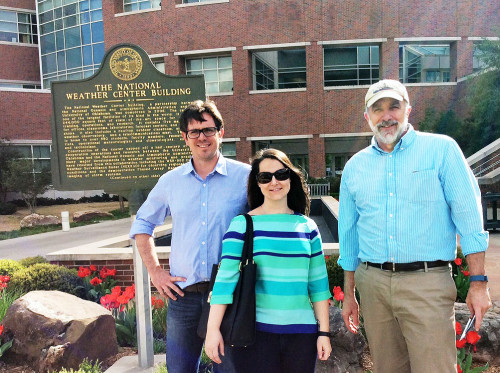
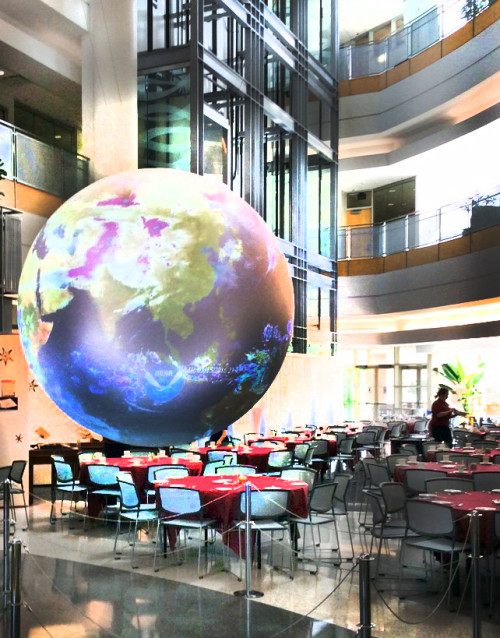
There was an exhibit in the atrium on Galileo and Kepler, with original copies of their famous books on display. After researching these iconic scientists who had such profound impacts on society (see my previous blogs on Galileo and his art and poetry as well as Kepler and his art and poetry), I was excited to see the original leather bound books with pages opened to some of their amazing drawings. A nice quote from Galileo was prominently displayed: "Natural philosophy is written in this grand book--I mean the universe--which stands continually open to our gaze, but it cannot be understood unless one first learns to comprehend the language and interpret the characters in which it is written. It is written in the language of mathematics, and its characters are triangles, and circles, and other geometrical figures . . .". The atrium also had a "weather wall" which was a bank of 9 large computer screens displaying various real time weather images and maps. Suspended from the ceiling was a globe, which displayed various global weather projections.

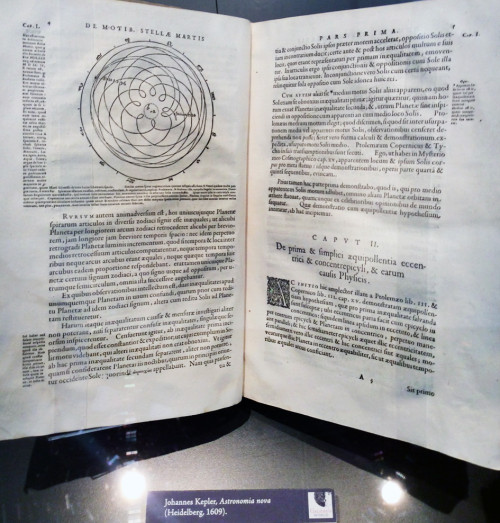
We visited the National Severe Weather Center where severe weather warnings are issued for the country. Four-to-six people staffed this center on eight-hour watches at all times. The lead forecaster sits underneath a clock displaying Greenwich Mean Time and each of the meteorologists had banks of at least six computer screens displaying different data. The forecasters also could view a panel of four ceiling monitors displaying video loops of moisture maps, infrared maps, Doppler radar maps and a zoomed in area of concern. When we visited, they were focused on a storm system extending through Texas, Oklahoma and Arkansas. The room setting made me think of an air traffic control center, with lots of data streaming in to the alert and experienced people making important decisions. In addition to the satellite and weather station data, the forecasters had access to the Twitter and Facebook weather reports, the live television weather broadcasts, and they could order balloon launches and helicopter flights to obtain more data.
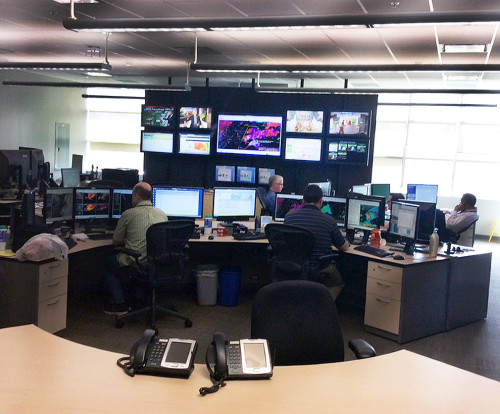
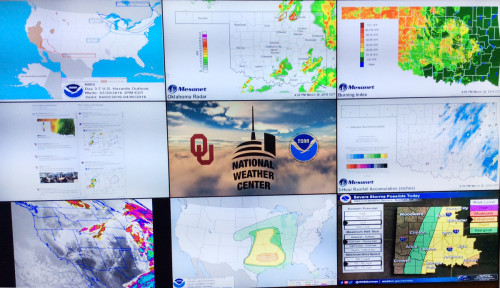
We also visited the local Weather Service Office, one of the 122 offices across the United States that tracked and reported weather in the Oklahoma region. Three-to-five forecasters who were also on eight-hour shifts in a continually manned office staffed this office. They also had banks of computer monitors at their desks as well as ceiling monitors. Since they were monitoring the severe weather occurring in Oklahoma, we could see a lot of red on the computer monitors depicting areas of high winds and rain. Considering the impending local storm, we asked about what happened if there was a power outage or evacuations. We were told that they had backup power sources and redundancy in operational capacity at local Air Force bases and other Weather Service Offices. Because of the extreme weather, there was a weather reporter being filmed adjacent to the National Severe Weather Center while we were there.
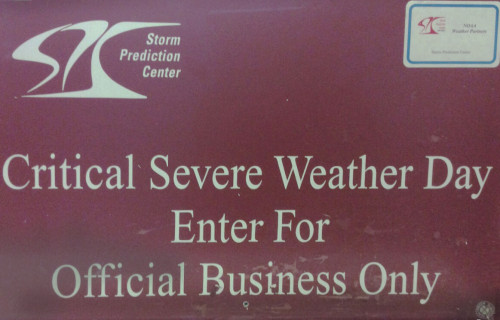
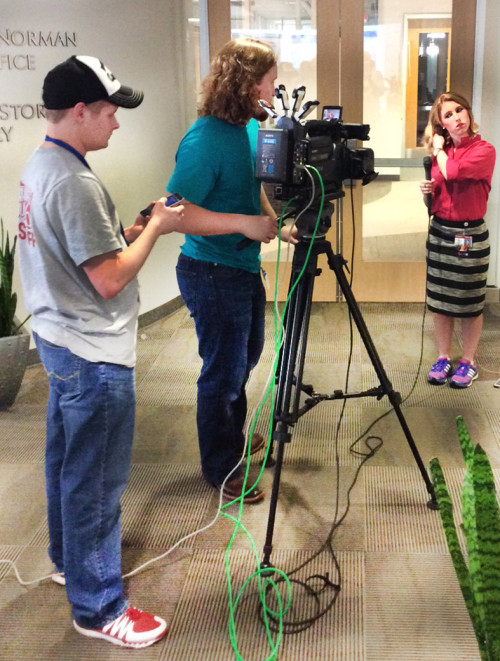
We were shown movie props used in "Twister" as well as the real device that was deployed to attempt to gather information on tornados. We were told a cute story about the university logo on the movie props. The movie producers had requested that the University of Oklahoma logo be used for authenticity, but since the movie had a scene of a pickup truck being intentionally driven into a tornado, the university balked. So the movie producers created a fictitious university, but had the slightly deranged character played by the late Phillip Seymour Hoffman wear a University of Oklahoma hat as payback. The slight must have been forgiven, because the National Weather Center cafeteria was named the "Flying Cow Cafe", based on the scene from Twister where a tornado picks up a cow that circles the heroes' pickup truck.
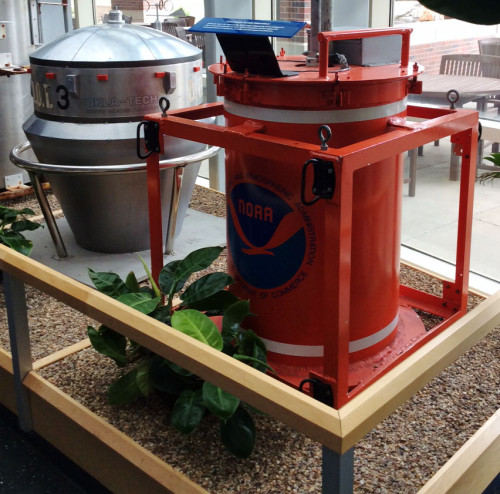
Following our tour of the National Weather Center, we noted beautiful views of cumulus nimbus storm clouds, and passed houses that had storm shelters buried in their front yards. We began to appreciate why the University of Oklahoma has one of the best meteorology departments in the world, the National Weather Center is located on campus, and there are suites of commercial companies that specialize in weather forecasting. Norman is a location where weather really matters and forecasting is a matter of life and death.
About the author
Bill Dennison

Dr. Bill Dennison is a Professor of Marine Science and Vice President for Science Application at the University of Maryland Center for Environmental Science.

